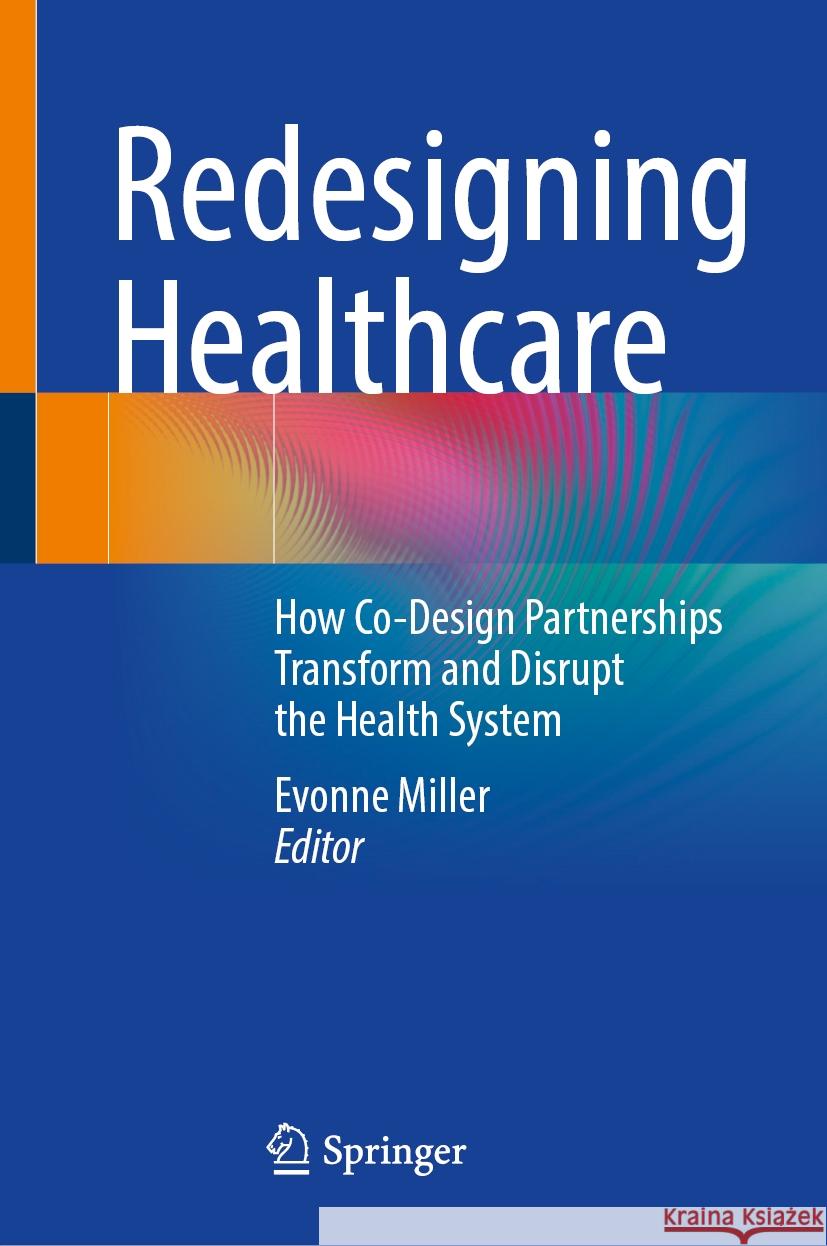Redesigning Healthcare » książka



(netto: 192,11 VAT: 5%)
Najniższa cena z 30 dni: 192,74 zł
ok. 22 dni roboczych
Bez gwarancji dostawy przed świętami
Darmowa dostawa!
2 Virtual Multi-Clinician Care for Diabetes: the Virtual Outpatient Integration for Chronic Disease (VOICeD) telehealth project
3 Cancer Wellness: Co-creating a new virtual service delivery model
5 It takes a village': Co-designing family-centred care in a paediatric intensive care unit
6 NICU mum to PICU researcher: A reflection on place, people and the power of shared experience.
7 Bringing the university to the hospital: QUT Design Internships at the Queensland Childrens’ Hospital Paediatric Intensive Care Unit
8 Designing out-procedural pain: the value of a rapid one hour co-design sprint
9 Co-designing Design Thinking Workshops
12 Parroting playful places: Designing wayfinding for the Queensland Children’s Hospital
13 “Whose heartbeat is that?”: An animation approach to promoting cultural safety in healthcare
14 Co-designing access to just healthcare for all consumers
15 Graphics and Icons for healthcare with a focus on cultural appropriateness, diversity and inclusion
17 Co-designing the future: Technology-enabled care in regional communities
18 Connecting rehabilitation teams: A design-led, arts-based and appreciative inquiry inspired approach to organizational change in healthcare
19 Emergency Room Exits and Entrances
20 Design as a catalyst for ‘systemic designability’: Reflecting on the origins of HEAL and its vital role in transforming healthcare in Queensland
PROFESSOR EVONNE MILLER QUT Design Lab, School of Design Faculty of Creative Industries, Education & Social Justice, Queensland University of Technology
Evonne is Professor of Design Psychology at Queensland University of Technology and Director of the QUT Design Lab. Co-Director of the HEAL (Healthcare Excellence AcceLerator) initiative, her research centres on design for health, drawing on participatory co-design, arts-based and knowledge translation approaches to understand, communicate, improve and re-design the experience of healthcare. She is the author, co-author, or editor of 4 books, exploring how we can create places that foster both planetary and human health.
DR SATYAN CHARIHealthcare Improvement Unit, Clinical Excellence Queensland.
Dr Satyan Chari is Co-Director of the HEAL (Healthcare Excellence AcceLerator) initiative. Satyan leads engagement within Queensland Health’s Clinical Excellence Queensland (CEQ) team and the wider health system. Clinically trained in occupational therapy and with a PhD in patient safety, Satyan has cross-disciplinary expertise in human factors engineering, participatory design, complexity science, and systems innovation. He advises globally on quality innovation programs.
DR ABBE WINTER
QUT Design Lab Faculty of Creative Industries, Education & Social Justice, Queensland University of Technology
Dr Abigail Winter is a results-driven writing specialist, collaborative mentor, and independent researcher, skilled in the analysis of words and data for user needs. Abbe is a researcher trainer, leader, and mentor, with over 20 years’ experience in quality assurance, and change and project management. While her PhD focused on what helps workers in higher education cope with large-scale organisational change, and she was part of the small team that created and developed the concept of academagogy (the scholarly leadership of learning), her more recent research has focussed upon professional identity, developing writing skills, and reflective practice.How Designers are Transforming Healthcare is a bold manifesto for change, demonstrating the value of a strategic design-led approach. Drawing on a rich array of real-world projects, this book illustrates how designers, in collaboration with clinicians and consumers, are co-creating transformative change across healthcare environments, products, services, and systems.
In a fascinating multi-voice conversation, this book outlines how design methods and mindsets, including co-design, prototyping, design and futures thinking, facilitates creative problem-solving. The ideas, tools, and challenges in How Designers are Transforming Healthcare make it a vital text - a doer’s guide - for designers, clinicians, academics, consumers, and policymakers seeking innovative strategies for engagement, innovation and improvement in healthcare.
1997-2025 DolnySlask.com Agencja Internetowa
KrainaKsiazek.PL - Księgarnia Internetowa









